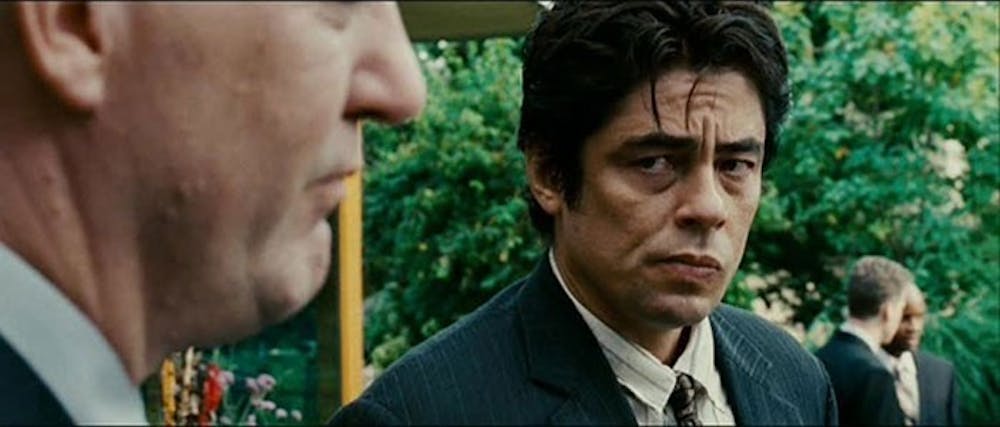Many people in Hollywood seem to think the surefire way to get a drama noticed come award season is to make sure it’s really “gritty.” Let’s call it the “Crash” effect.
After that film’s Best Picture Oscar win in 2005, a hyper-stylized sense of realism became the trend in major Hollywood pictures. As most successful things often become mere commodities in Hollywood, realism is now something that producers attempt to pepper into some big-budget films as though it were the essential ingredient to their Oscar-winning stew.
The people behind “Things We Lost in the Fire” think they have that ultimate recipe for Oscar gold. Start with a tragic and unexpected death, add a hearty helping of beautiful widow, sprinkle in a few ultra-precious children for good measure and don’t forget the most important ingredient of all: one “gritty,” but brief, scene of a the main character shooting up heroin. Surely, a recipe like that had many industry types salivating. Sadly, the elements don’t add up here, and the resulting dish is a bit nauseating.
The film opens at a memorial service for Brian (David Duchovny), who was shot during an altruistic attempt to break up a domestic dispute. Left in mourning are his wife Audrey (Halle Berry), his two young children and his drug-addict best friend Jerry (played by perhaps the easiest guy in Hollywood to make look really strung out: Benicio del Toro).
Though Audrey has always resented Jerry, she quickly realizes she cannot deal with her grief alone and offers to let Jerry live in their garage. Though he initially thinks that Audrey wants to help him get clean, she soon reveals that she’s the one who needs help. Jerry soon endears himself to the children and neighbors, as well as Audrey herself. It’s not long before their relationship begins to teeter toward the sexual side. The film’s attempts at suspense lie in the question of whether they will sleep together, but after a while even that tension begins to strain. By the end of the film, all of the characters are forced to confront the fact that Jerry cannot replace Brian, though they all try to use him in that way.
Stylistically, “Fire” employs many sharply focused close-ups and often inexplicable jump cuts in an attempt to add that gritty sense of realism to the film. At first, the close-ups are somewhat compelling and provide an interesting sense of texture, but all the effects are overused and thus, quickly grow stale.
The film spends too much time preoccupied with the soft-focus delicacy of Audrey’s Pottery-Barn-catalogue world – a place where the backyard patio overflows with exotic wildflowers, the pristine, stainless-steel kitchen is perpetually devoid of dirty dishes and children have names like Harper and Dory. In this setting, any attempt at realism or grit just seems silly.
Also in that vein, Jerry’s addiction becomes little more than a spectacle. There is no attempt to understand his motivation or to flesh out his character as anything more than the stock “junkie.” When a neighbor asks him to explain how a lawyer becomes a heroin addict, Jerry replies, “Simple. You start with cocaine, move on to crystal meth and then bam! Heroin addict.” But del Toro’s performance is one of the few salvageable parts of the film. He plays Jerry as well as he possibly can play a character whose nuance is marginalized by the script.
“Do you ever feel like you’re inside of a movie?” Harper asks Jerry during a scene where he attempts to relate to her by – you guessed it – challenging her to a one-on-one game of basketball. She pauses and quietly adds, “It’s a sad movie.”
She’s right, but the saddest thing about “Things We Lost in the Fire” is that it’s too afraid to save itself from falling into Hallmark-schlock territory by embracing a bit of the grit that its style calls to mind.
“Things We Lost In The Fire” opens nationwide tomorrow.





